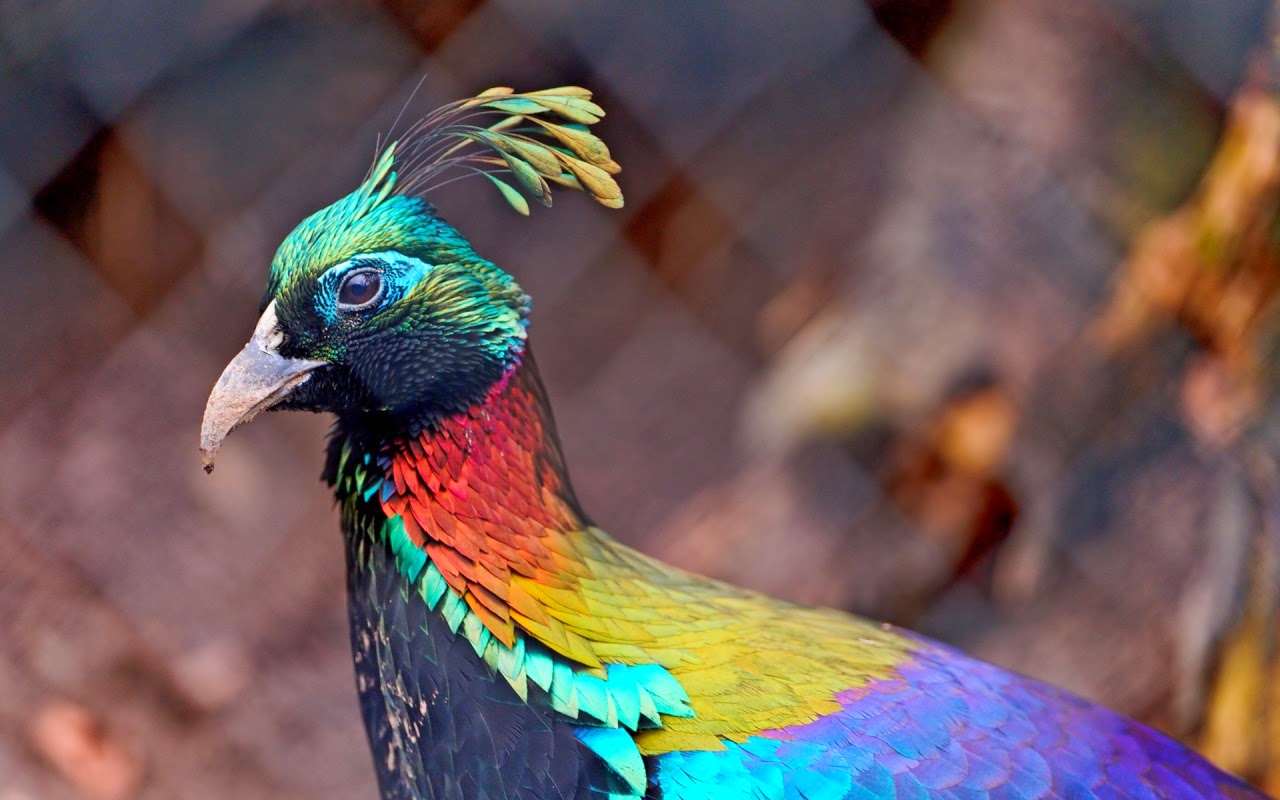

It tolerates snow and digs through it to obtain plant roots and invertebrate prey. Believed to show largest altitudinal movement of all Himalayan pheasants. It descends to 2,000 m (6,600 ft) in the winter. It lives in upper temperate oak-conifer forests interspersed with open grassy slopes, cliffs and alpine meadows between 24 meters, where it is most common between 27 meters.

#Male himalayan monal pheasant skin#
The male also has a bare patch of turquoise blue skin around the eye.The Himalayan monal’s native range extends from Afghanistan and Pakistan through the Himalayas in India, Nepal, southern Tibet, and Bhutan. The breast and underparts are black and the tail is copper. The males also have a large white patch on the rump. The tail feathers are uniformly rufous being darker towards the tips. The adult male has a long, metallic-green crest, much like a peacock, changeable reddish copper on the back and sides of the neck and a prominent white back and rump while in flight. The male’s impressive display features bowing and vigorous waving of the rufous tail, but it is the iridescent plumage on the wings and neck that give the bird its reputation as the “nine-colored bird” consisting of interspersing mix of metallic colors of green, purple, red and blue. The first-year male and the juvenile resemble the female, but the first-year male is larger and the juvenile is less distinctly marked. The female has a prominent white patch on the throat and a white strip on the tail. The tail feathers of the male are uniformly rufous, becoming darker towards the tips, whereas the lower tail coverts of females are white, barred with black and red. Notable features in the male include a long, metallic green crest, coppery feathers on the back and neck, and a prominent white rump that is most visible when the bird is in flight. The adult male has multicoloured plumage throughout, while the female, as in other pheasants, is more subdued in colour. The male weighs up to 2380 grams and the female 2150.

These pheasants are amongst the most beautiful pheasants due to their striking metallic-colored plumage. It was also the state bird of Himachal Pradesh until 2007. It is the national bird of Nepal, where it is known as the danphe, and state bird of Uttarakhand, India, where it is known as the monal. The Himalayan monal (Lophophorus impejanus), also known as the Impeyan monal and Impeyan pheasant, is a bird in the pheasant family, Phasianidae. THESE ARE THE TOP 4 MOST BEAUTIFUL PHEASANTS.Himalayan Monal in the mist monochrome, Bhutan When displaying or flushed, flashes a bright white patch on the back. The eyes are brown with pale grey eyerings. Himalayan Monal - eBird Decked out in all the colors of the rainbow, the male is the image of iridescence green crested head, red neck, green shoulders, blue back, orange tail, and black underparts. The tail is similar in color to body plumage, but it is much shorter than in males. On the head, the crown is more reddish, but the nape is dark grey. The underparts are usually paler than the upperparts.

The female has rich rufous-brown plumage, a heavily barred black overall. The bill is grey, the eyes are white with a blue ring around them, and its feet and legs are pale blue, with spurs. On the hind crown, there is a bright red crest. They also have a beautiful white belly and a dark green head. The rump is buffy-yellow, and the barred is also green. The upper tail-coverts are black and white, mixed with orange and red. The adult male has a dark green back with black scales. The first specimen was sent to London in 1828. The Lady Amherst’s Pheasant is from Chinese provenience.


 0 kommentar(er)
0 kommentar(er)
